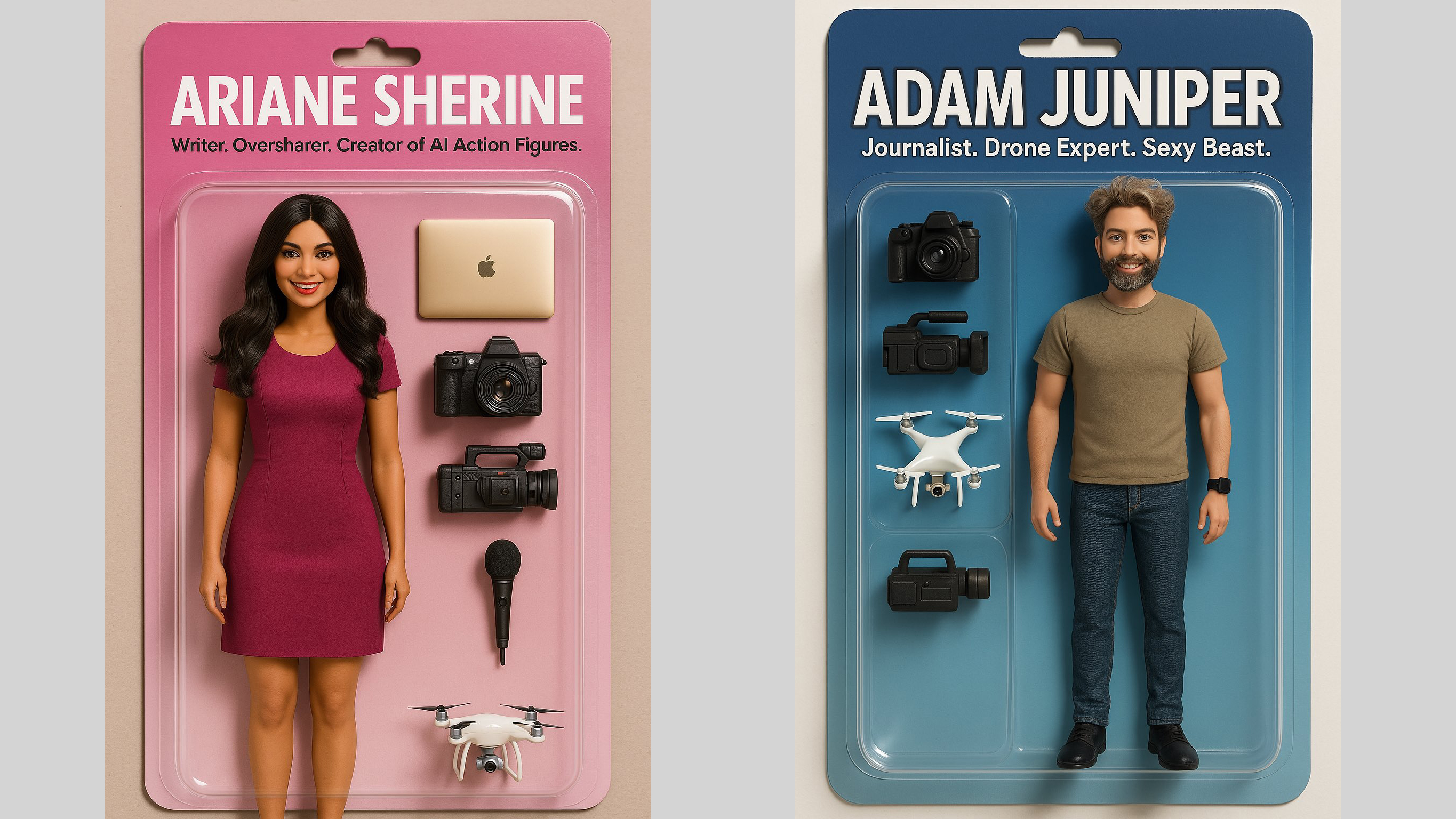The best photo printer in 2025: top A4, A3 and A2 desktop printers for photography
The best photo printers create great colour and mono photo prints at home, but which one should you go for?

I’ve been testing and reviewing desktop printers for decades and have come to the conclusion that, nowadays, the title of best photo printer is essentially a dogfight between two names: Canon and Epson. While there are other printer manufacturers, Canon and Epson are the only contenders when it comes to desktop printers for high-quality photos. When I want to frame, mount, or display my photos, this is where I need to be.
Key factors to consider are the size of the photos you want to print, and the type of ink you want to use. For this guide, I’m starting off with the best regular Letter-size (A4) photo printers, then moving on to larger-format 13-inch (A3+) printers, and finishing off with 17-inch (A2) printers. Naturally, if you want to create photo prints to hang on the wall, bigger tends to be better. Scroll to the bottom of this page for my top tips on how to choose and use a photo printer.
When it comes to cost, there’s more to it than the price of a printer. Ink refills are infamous for being eye-wateringly expensive. Even so, it’s worth it in the long run if you plan on creating a lot of photo prints, compared with the cost of using the best photo printing services. Better still, I find that making my own prints takes just a few minutes and puts me in full control of the whole process.
I hate wasting ink, so all of the printers on my list use individually replaceable inks. That way, I only need to replace cartridges that have run dry. Alternatively, the more recent breed of Canon MegaTank and Epson EcoTank printers run on bottles rather than cartridges, which can be more efficient, less wasteful, and much less expensive over the lifetime of the printer. However, models with refillable tanks rather than cartridges are still much less common when it comes to large-format photo printers.

Matthew Richards is a photographer and journalist who has spent years using and reviewing all manner of photo gear. He is Digital Camera World's principal printer reviewer – and has tested all the printers on this list. His expertise with equipment doesn’t end there, though. He is also an encyclopedia when it comes to all manner of cameras, camera holsters and bags, flashguns, tripods and heads, printers, papers, and inks, and just about anything imaging-related.
The Quick List
Here's a quick rundown of all the photo printers in this guide. Scroll down for a more in-depth look at the individual products.
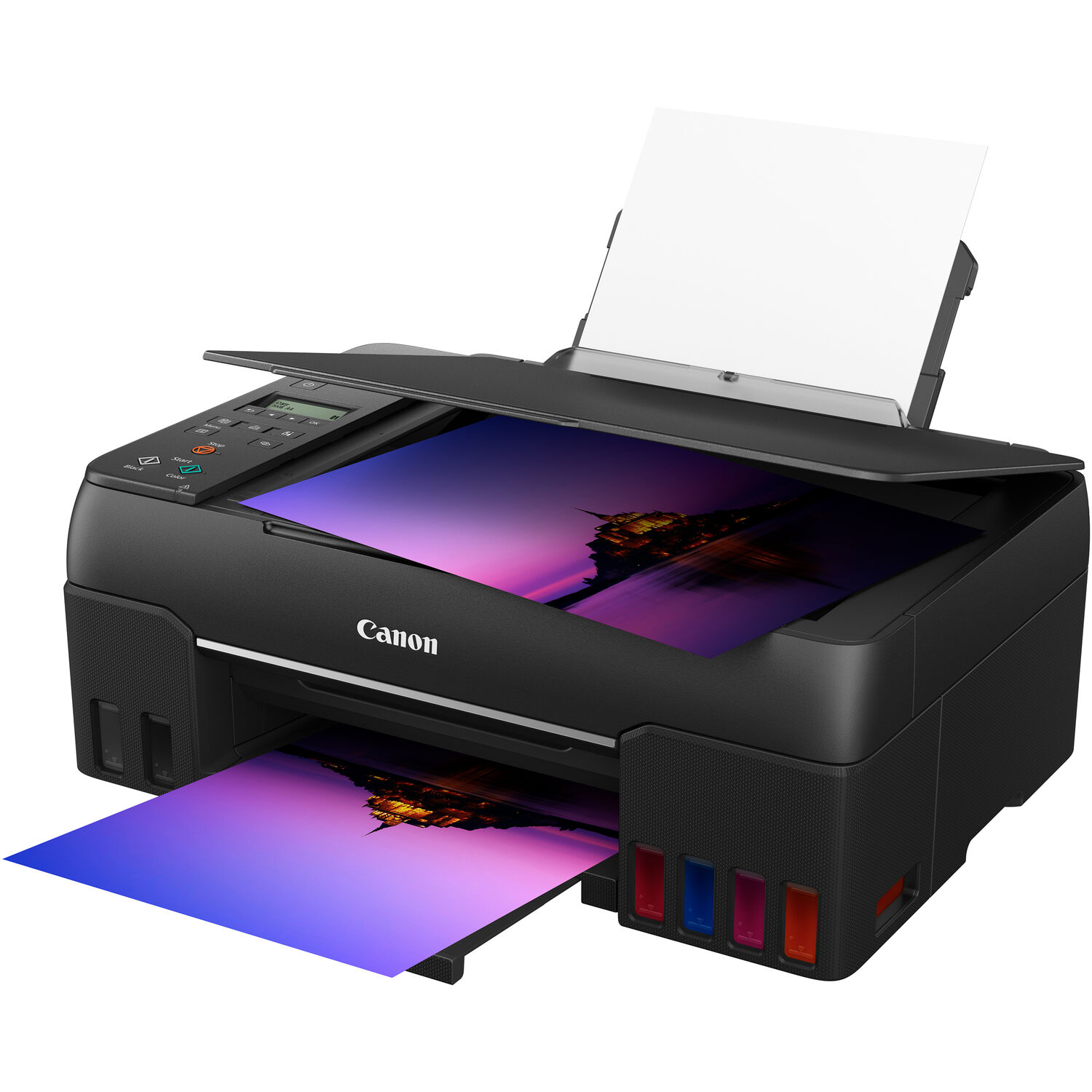
This is my favorite standard-sized photo printer. It runs on six dye-based inks, all of which are used for photo printing, to give an excellent color space for high-fidelity photographic reproduction. It’s great value to buy for a multi-function MegaTank printer and bottled ink makes it cheap to run.
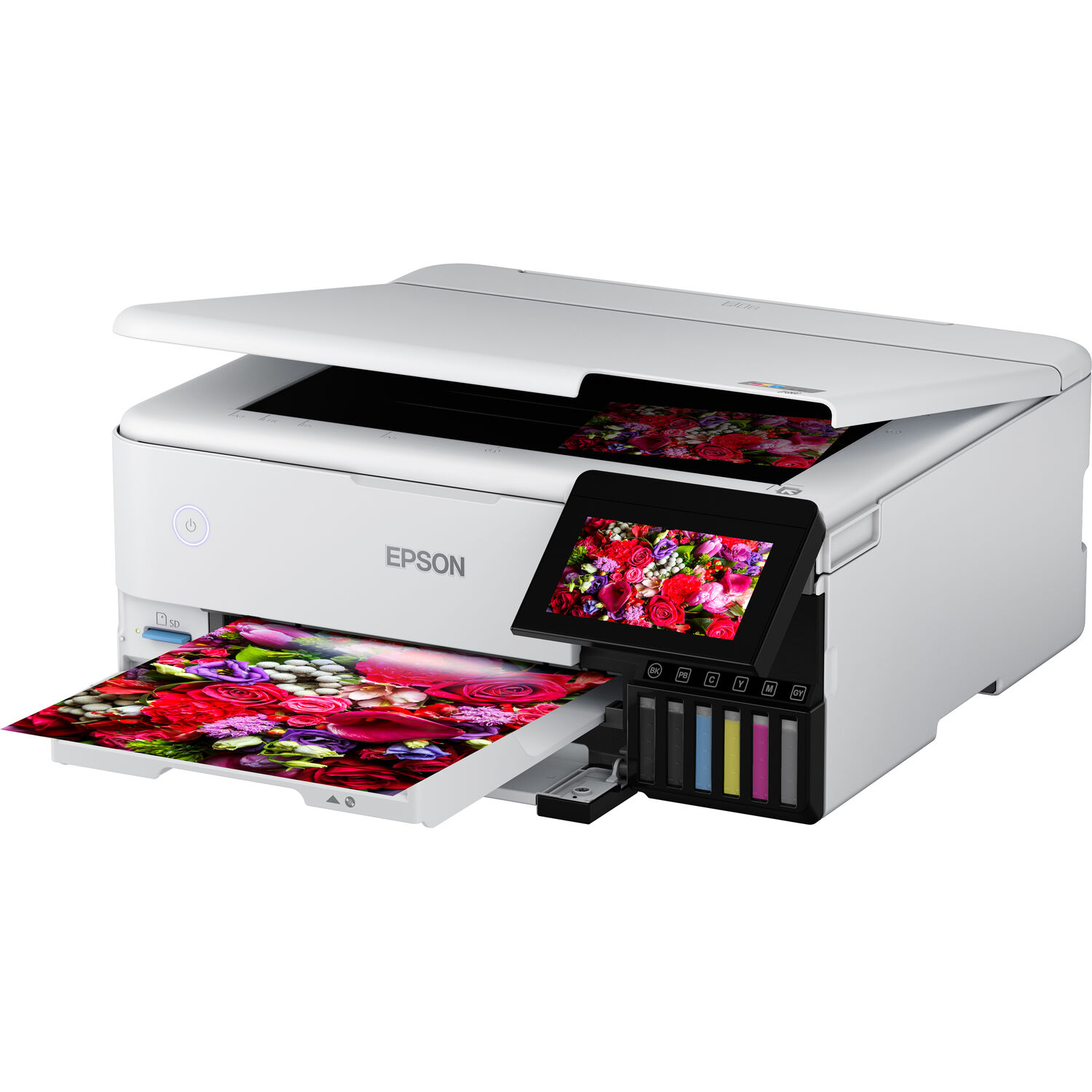
The consummate all-rounder, this Epson regular-sized printer takes document printing as well as photo output in its stride, thanks to five dye-based inks plus a pigment black. The initial purchase price is comparatively high for a Letter (A4) printer but bottled ink makes it cost-effective in the long run.
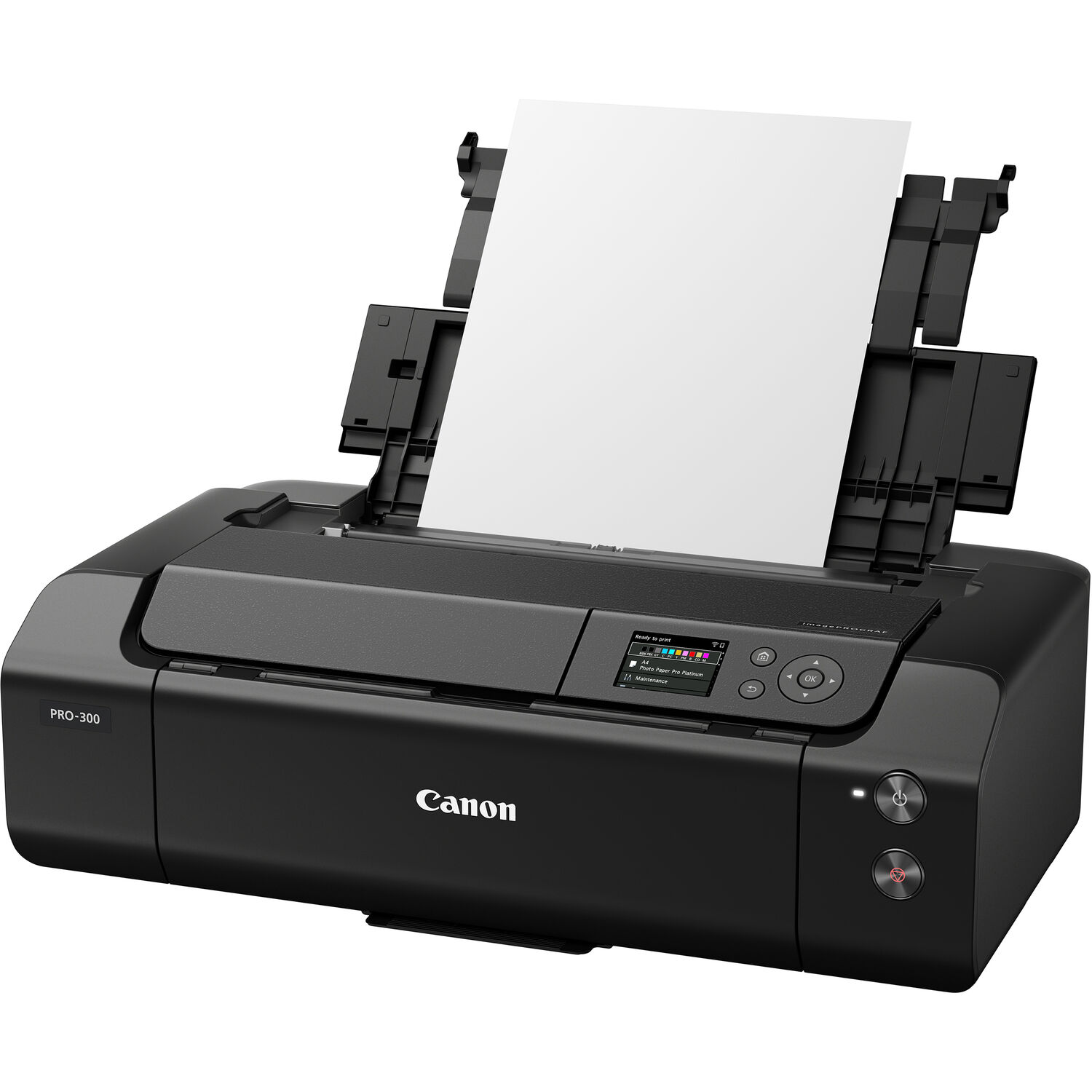
For a A3+ photo printer, I think this Canon is unbeatable. Photo quality for both color and black-and-white images is spectacular on matte and fine-art media. For a pigment-based printer, it also works well with glossy paper thanks to its Chroma Optimizer. This model will soon be replaced with the newly-announced Pro-310.
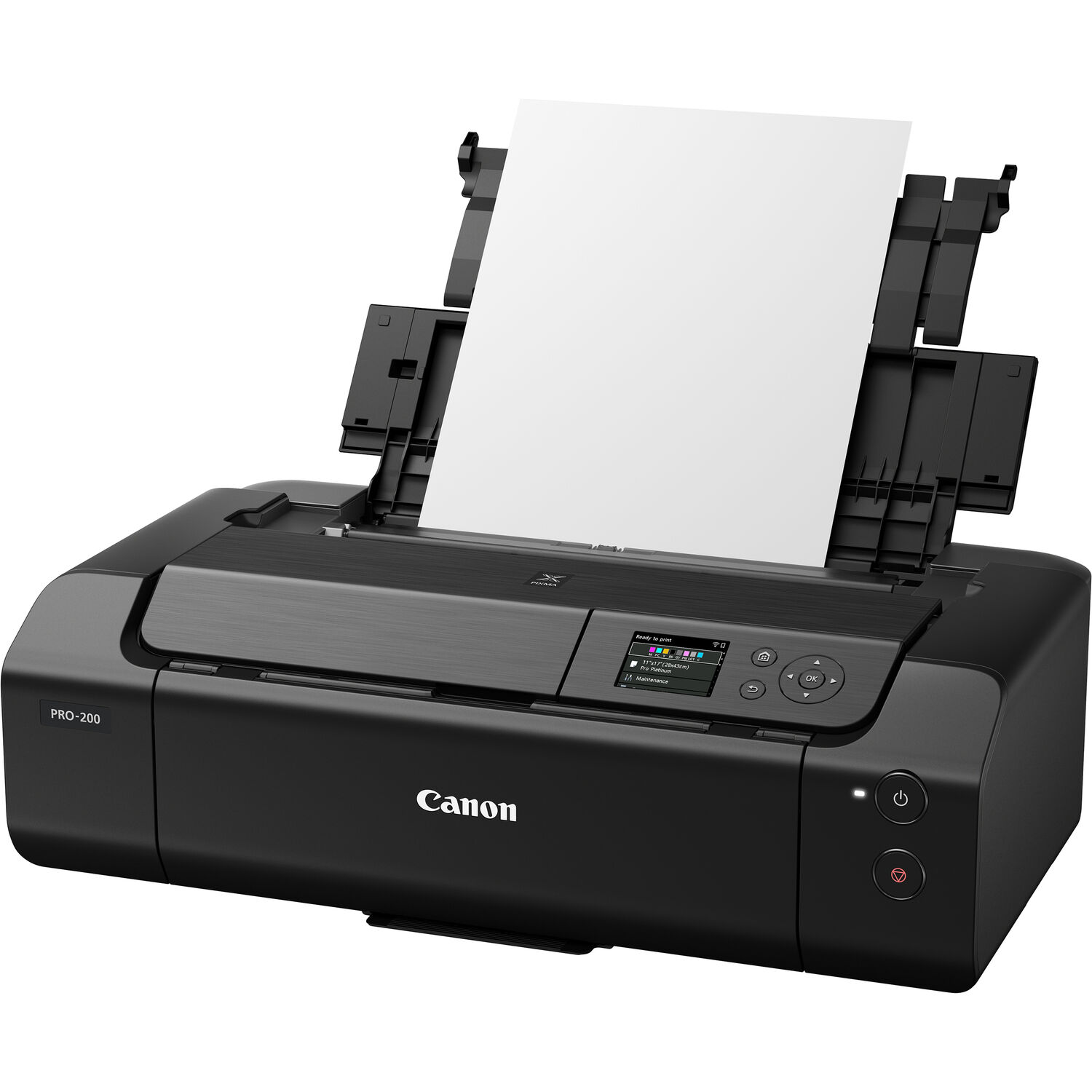
For my money, this is the best 13-inch (A3+) photo printer for glossy and luster paper. Its dye-based inks are fully absorbed beneath the outer protective layer of the paper for a super-smooth finish, and fidelity is outstanding for both color and black-and-white photo images.

I feel that this printer is a significant improvement over the preceding model and, as a pigment-based printer, it’s ideally suited to matte and fine-art media. A major plus point is that it comes complete with a 2-inch core roll feeder for creating panoramic prints.
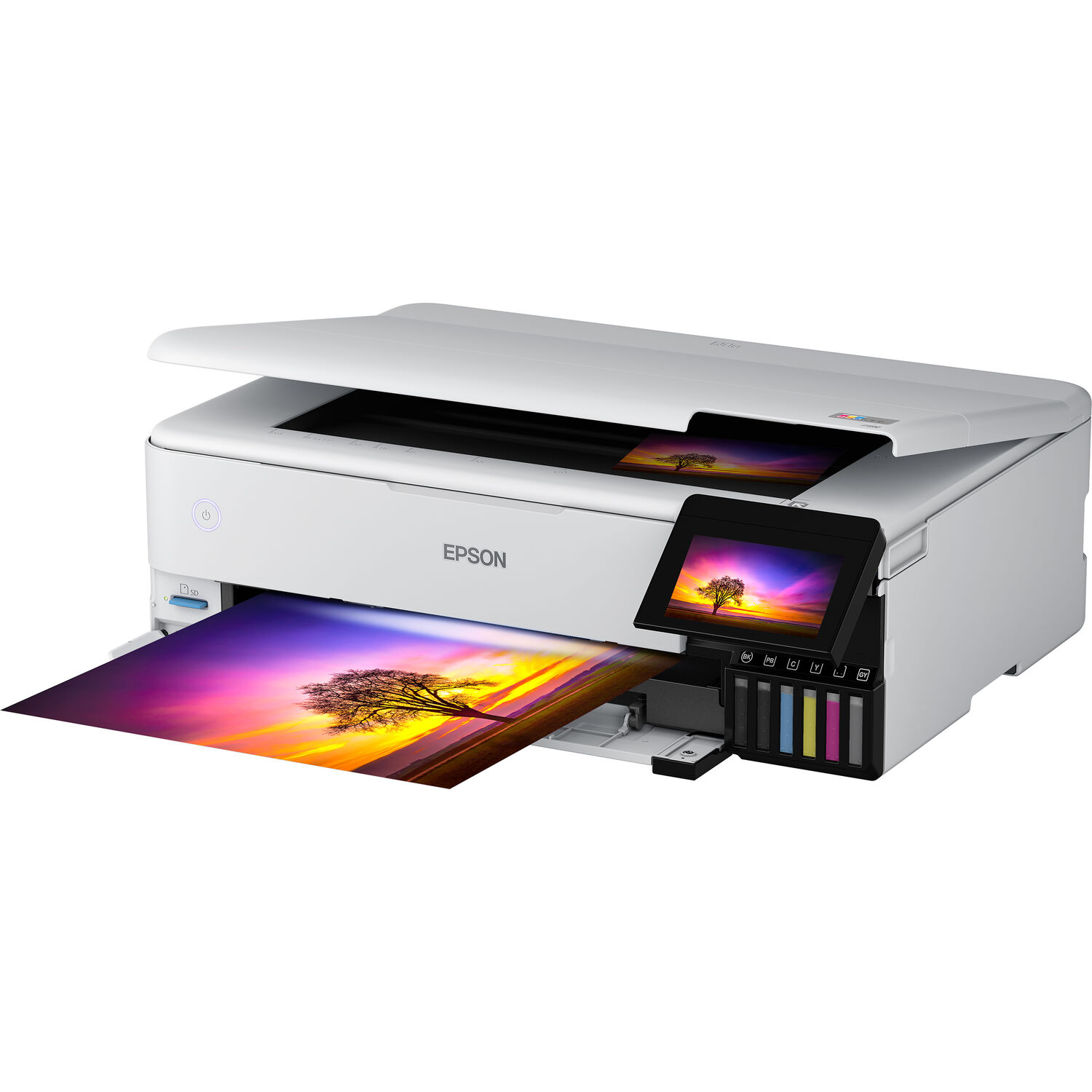
This upsized version of the Epson EcoTank ET-8550 enables 13-inch (A3+) prints rather than just 8.5-inch (A4) prints. It includes a standard-sized scanner, making it particularly versatile as a large-format printer, and is equally adept at document and glossy photo output.
View the full list ⤵
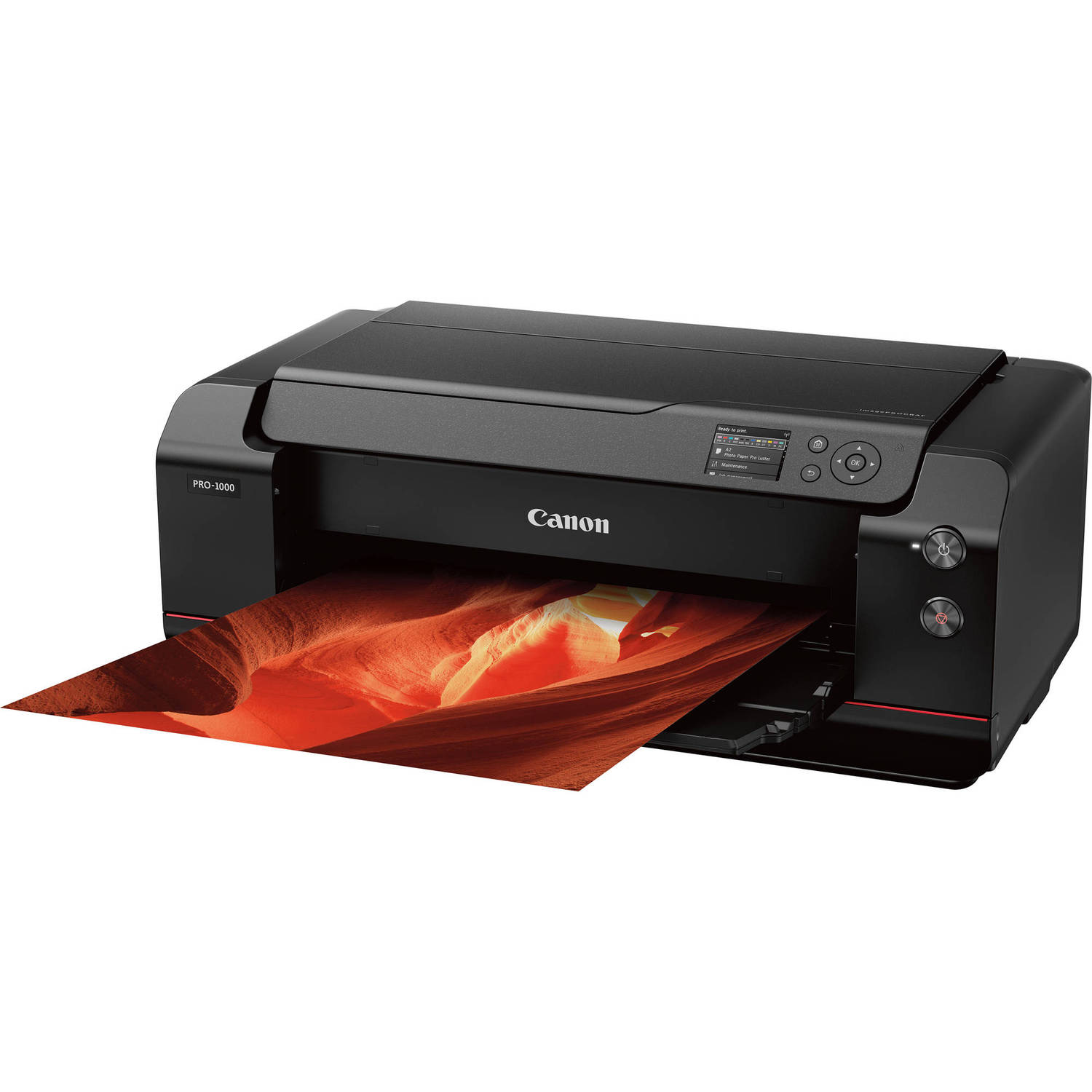
I love that this printer delivers super-sized photo prints while going extra-large on quality. It’s quite a weighty beast but build quality feels of a truly industrial standard. It’s an epic printer with a class-leading range of 12 inks, for the ultimate in color and black & white definition.
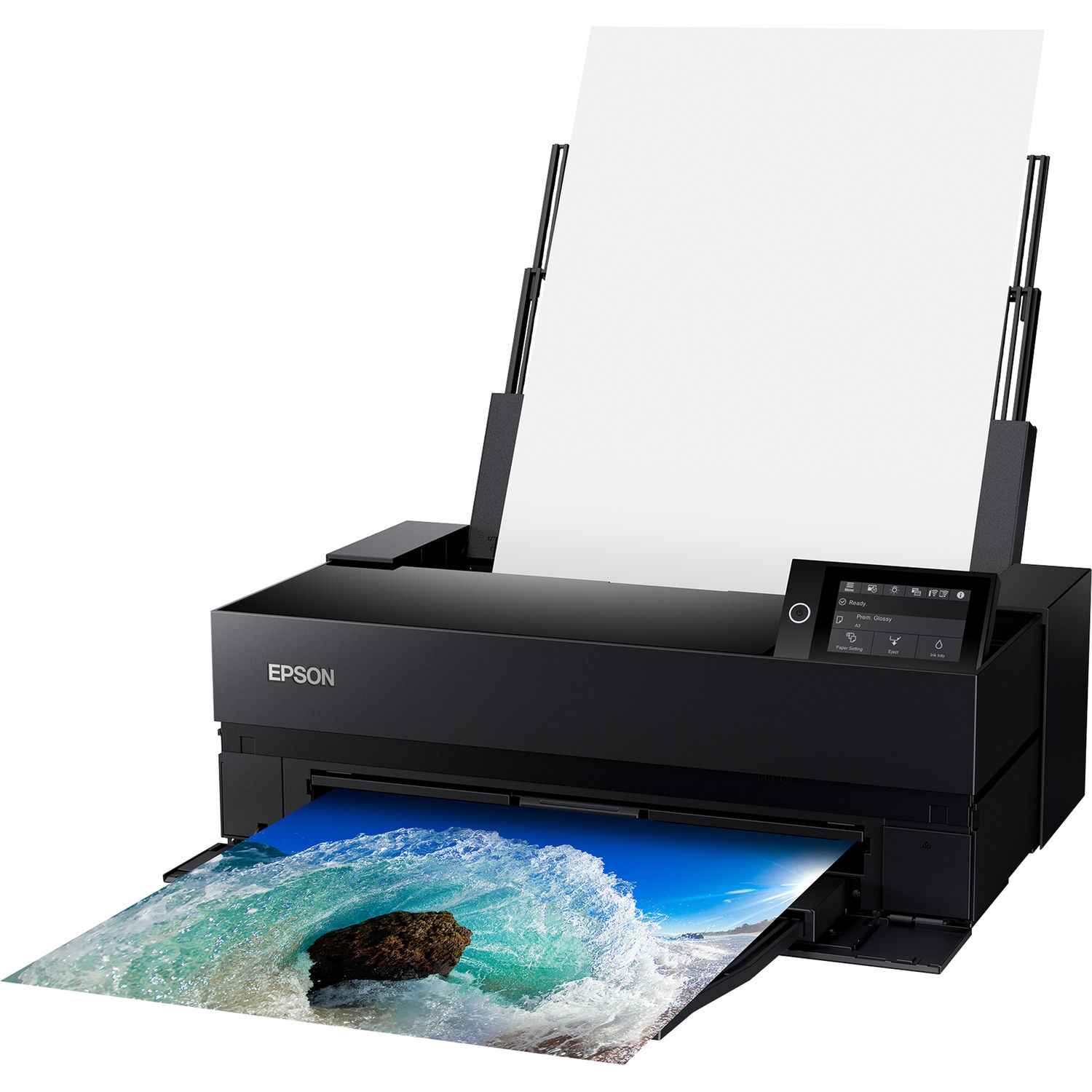
The upsized version of the Epson SureColor SC-P700, this 17-inch (A2) model runs on the same line-up of 10 top-quality UltraChrome PRO pigment-based inks but I like that the cartridges have double the ink capacity. A rear-mounting roll-feeder is available as an optional extra.
The best photo printers we recommend in 2025
Why you can trust Digital Camera World
Best photo printer for Letter (A4) photos

Specifications
Reasons to buy
Reasons to avoid
✅ You want premium photo quality in a Letter (A4) sized printer.
✅ You don’t mind that mono text isn’t smudge-resistant on plain paper.
❌ Youd prefer a printer that’s equally adept at document printing.
❌ You’d rather have a printer with a touchscreen interface.
I like that, as with other Canon MegaTank inkjet printers, the G650 (G620 in the US and G660 in Australia) is a cartridge-free machine that has relatively high-volume ink tanks, topped up by 60ml bottles of ink. With my money-saving head on, that works out to about an eighth of the cost of most cartridge-based printers. I also like that the printer itself is very affordable to buy, compared with many bottle-fed printers.
The photo-friendly line-up of six dye-based inks includes CMYK plus red and grey inks, aiming for a wide color space and enhanced mono photo quality. The individually keyed, squeeze-free bottles ensure simple, mess-free top-ups and make it impossible to pour any color of ink into the wrong tank.
There are no internal paper feed cassettes, just an upright input tray at the rear, which makes it easy to swap between different sizes of plain or photo paper. There’s also no color touchscreen but the small mono LCD enables an intuitive pushbutton interface. It makes short work of creating mono or color photocopies, courtesy of the built-in scanner. Connectivity is good too, with USB and Wi-Fi, the latter enabling PIXMA Cloud Link for smartphones and tablets, Apple AirPrint, Mopria for Android and Wireless Direct.
A set of ink bottles is sufficient for 3,800 6x4-inch photos, or around 3,700 mono documents, or 8,000 color documents. Despite lacking a pigment-based black ink, mono text is pretty crisp. I find that print speeds are a little pedestrian, taking around 47 seconds to create a 4x6-inch glossy photo, but a borderless A4 photo print only takes a couple of minutes in standard photo quality mode. Color rendition is impressively accurate, tonal range is very good and the printer makes a good stab at black & white photo printing. In the long run, it’s great value for a highly capable photo printer.
Read more: Canon PIXMA G620/G650/G660 review
| Print quality | Tonal range is impressive and very accurate to real life. perfect for A4 prints | ★★★★½ |
| Cost to run | Working out as an eighth of the cost of most cartridge-based printers | ★★★★★ |
| Overall value | For the initial price, cost to run and its print quality up to A4, this is a great investment | ★★★★★ |
Best multi-purpose Letter (A4) photo printer

2. Epson EcoTank ET-8500
Specifications
Reasons to buy
Reasons to avoid
✅ You want a single printer that works great for photos and documents.
✅ You want a multi-function printer with an intuitive interface.
❌ You’re put off by the particularly steep initial purchase cost.
❌ You only need to print photos occasionally.
I like that this Epson is rather like a photo printer with a business hat on. Like pretty much everyone, I don’t want to buy and run two printers, one for photos and the other for documents, so I’m happy that the Epson takes both in its stride. I also like the fact that running costs are inexpensive, as I’d expect from an EcoTank printer with supplies of bottled ink to top up the tanks. I’m not so keen that it’s comparatively expensive to buy, so it can take quite a while to claw the money back along the road to total cost of ownership.
As with the upscaled Epson EcoTank ET-8550, this Letter (A4) printer runs on the same mix of pigment-based black ink and dye-based cyan, magenta, yellow, black, grey inks. This enables solid, smudge-resistant black text on plain paper, along with a good tonal range and color space for photo printing, for both color and black & white images.
I’m pressed that the printer can output 4x6-inch borderless color photo prints in just 25 seconds, which is a bonus when I want to make a large set of prints. The printing process is streamlined for document printing as well, with automatic double-sided printing and easy copying or scanning via the built-in scanner, SD card slot and USB memory stick port. The printer is also well-connected, with USB, Ethernet and Wi-Fi built-in. You can also print direct onto white-faced CD and DVD discs (remember those?). Everything’s brought together by an intuitive 4.3-inch touchscreen interface.
| Print quality | Quality is good for photos and documents, but does take a little time to print its larger sizes | ★★★★ |
| Cost to run | Running costs are inexpensive for those that print both documents and prints | ★★★★ |
| Overall value | To run this is a great printer for those that want one printer to do it all, but it is a rather costing investment upfront compared to others | ★★★★ |
Best photo printer for 13-inch (A3+) photos
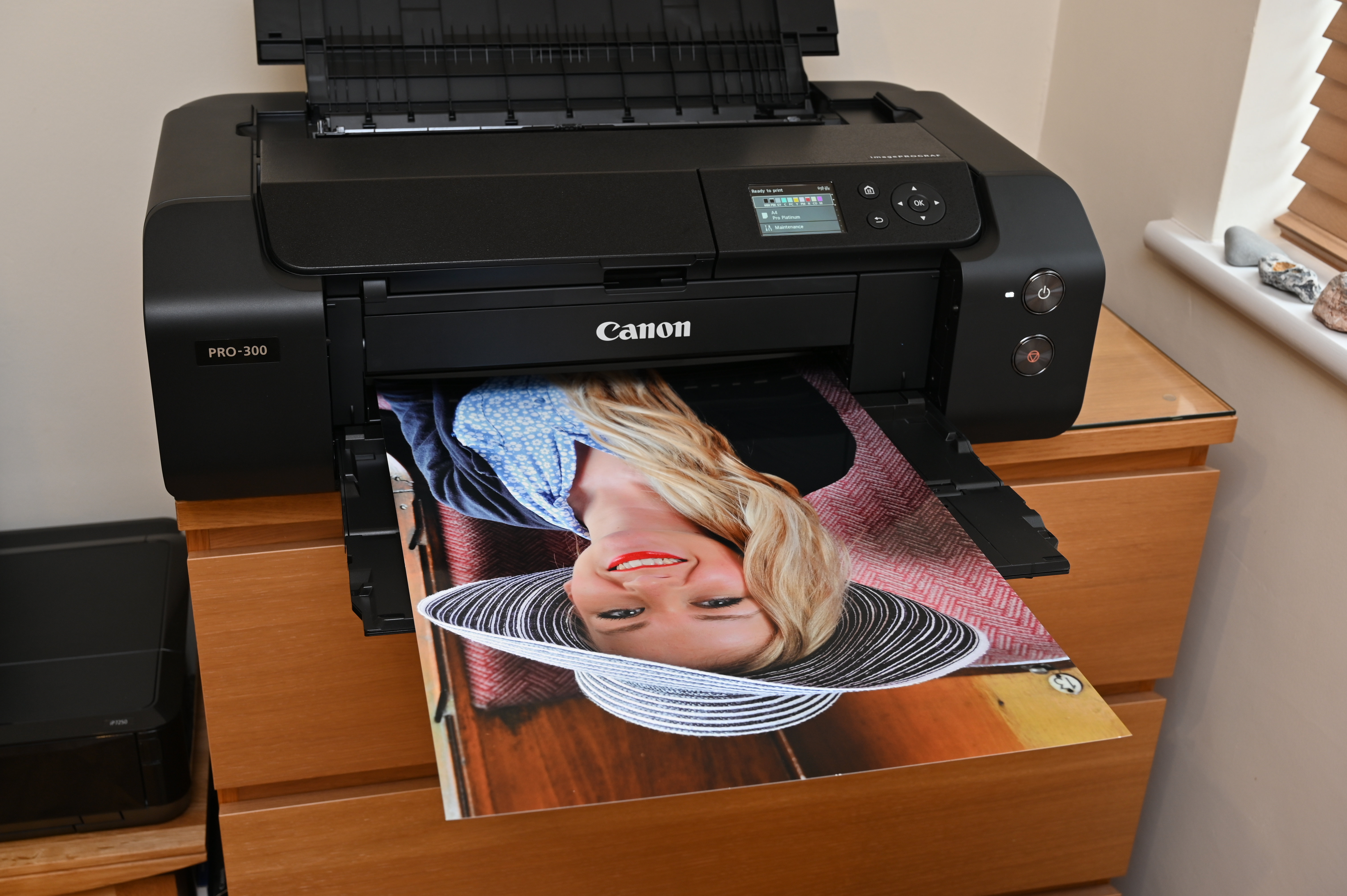
Specifications
Reasons to buy
Reasons to avoid
✅ You want flexibility for glossy, matte and fine-art media.
✅ You want unbeatable black & white performance as well as color.
❌ Speed is of the essence and you’d prefer a faster dye-based printer.
❌ You only print on glossy, semi-gloss and luster photo papers.
I love that, as a pigment-based printer, the PRO-300 is particularly versatile. It delivers superb looking output on glossy as well as matte and fine-art media. Like the older PIXMA PRO-10 and larger, A2 format imagePROGRAF PRO-1000, it features a ‘Chroma Optimizer’ cartridge. This smooths out the finish when printing on glossy photo paper, so that there’s relatively little difference in the reflectivity of different colors and tones.
I’m impressed that the ink range itself is very comprehensive, with ten separate cartridges in total. They’re all from Canon’s latest LUCIA PRO line-up, giving the potential for a wide gamut (color space) with rich, vivid color rendition, as well as high-fidelity black & white photo printing. The 14ml cartridge capacity should prove sufficient for around 30 to 60 A3+ prints (depending on color) although quantities naturally vary depending on the prominent colors and density within images.
Media handling is very good. I like the inclusion of a rear-mounted upright paper feeder plus a horizontal manual feeder, the latter being more ideal for fine-art and thicker media. The manual feeder also enables oversized printing for panoramic and banner output, up to almost a meter in length. A 3-inch color LCD screen is another handling bonus, although it’s not a touchscreen. Unlike Canon’s previous pigment-based printers and as with the PRO-200, the PRO-300 enables borderless output on matte and fine-art media, instead of just on glossy, semi-gloss and luster photo papers. I find that gives me far more options for full-bleed printing.
Image quality is spectacular, for both color and mono photographic prints. A particular highlight (or perhaps the opposite) is that the printer delivers incredibly sumptuous and richly detailed blacks, which add a real depth to print quality. It’s pretty speedy for a pigment-based printer as well, even in its highest quality mode, although it can’t match dye-based printers for speed and, as usual for pigment-based inks, prints aren’t touch-dry as they leave the printer.
Note: A newer Canon Pixma Pro-310 was announced in January 2025 which will eventually replace the Pro-300.
Read more: Canon imagePROGRAF PRO-300 review
| Print Quality | With unbeatable blacks and outstanding print quality this is perfect if you want a A3+ table top printer | ★★★★½ |
| Cost to run | While using 10 separate inks will be more expaensive the results speak for themselves and offer a pro-grade performance | ★★★★ |
| Overall value | While its investment might be high for a "do-it all" print. However, as a dedicated photo printer its worth it for those amazing colors | ★★★★½ |
Best 13-inch (A3+) dye-based photo printer
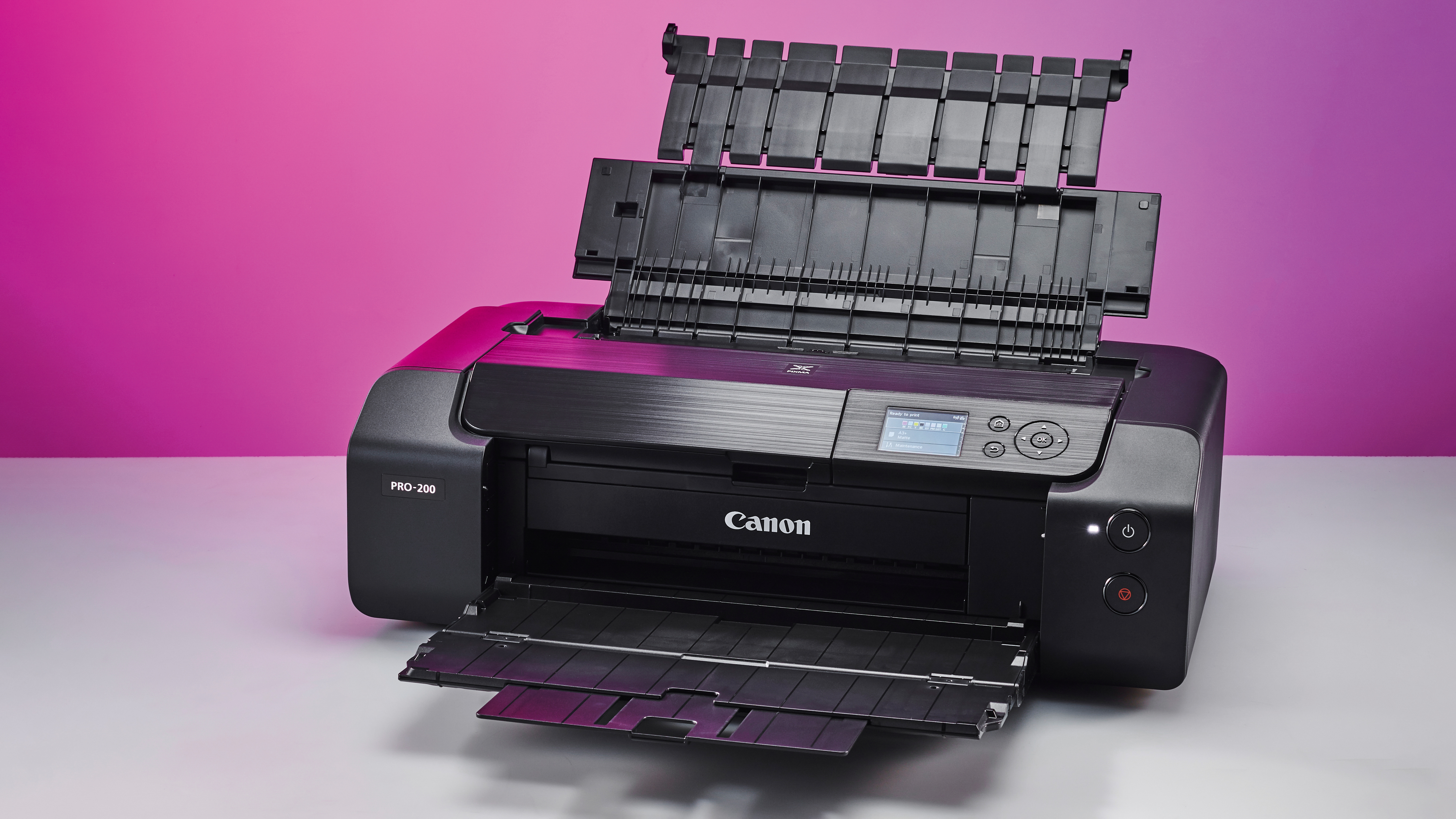
Specifications
Reasons to buy
Reasons to avoid
✅ You want the best quality for glossy color photos.
✅ You don’t tend to use matte or fine-art media.
❌ You want a printer with a built-in scanner.
❌ You only need Letter (A4) sized photo prints.
Canon’s PIXMA PRO-100 had long been my favorite A3+/13-inch pro-grade printer for creating photo prints on glossy and luster papers. Running on eight dye-based inks, including black, grey and light grey, it delivered sumptuously smooth glossy prints with immaculate color rendition and very good tonal expression for black & white photographic images. The replacement PRO-200 brings a number of improvements and enhancements, similar to those of the imagePROGRAF PRO-300 compared with the older PIXMA PRO-10 pigment-based model.
For me, a headline upgrade is that the PRO-200 has a new and improved range of inks that deliver a greater color space, superior vibrancy and deeper reds, blues and blacks. I find that paper handling is intuitive, as with the pigment-based PRO-300, with an upright rear feeder and a secondary manual feeder that enables custom print lengths of up to 39 inches (99.1cm). Other similarities with the PRO-300 are the addition of a 3-inch color LCD screen and compatibility with Canon’s excellent Professional Print & Layout software, which is available as a free download. The printers are also fully compatible with a large range of top-quality fine-art media from the likes of Canson and Hahnemühle.
As I’d expect, print speeds from this dye-based printer are faster than from the pigment-based PRO-300 model. As is often the case these days, the difference in print quality between standard and highest quality modes can look fairly negligible, unless you’re viewing photo prints with a high-magnification loupe. Even in standard mode, the PRO-200 delivers fabulous photo print quality and is simply the best in the group for glossy photo paper, although the PRO-300 is better for black & white images, especially on matte and fine-art media.
Read more: Canon PIXMA PRO-200 review
| Print quality | Great for printing color on gloss paper | ★★★★ |
| Cost to run | With eight inks it can be a little pricey depenging how much you print, but they will be the best prints you have seen on glossy paper | ★★★★½ |
| Overall value | With a lower upfront cost than many this is a great option if you just want to print on glossy paper | ★★★★½ |
Best 13-inch (A3+) photo printer for panoramas

Specifications
Reasons to buy
Reasons to avoid
✅ You want an included roll feeder for panoramic prints.
✅ You have an older Epson SureColor printer but want a worthy upgrade.
❌ Youd rather have the best quality for glossy photo prints.
❌ You’d prefer the higher-capacity ink cartridges of the SC-P900.
I’m often frustrated by the short lifespan of ‘setup’ cartridges that are supplied with inkjet printers. This Epson is a key offender. I found that after setting up the printer, there was only enough ink left in the cartridges to create half a dozen or so 13-inch (A3+) photo prints, and a full set of 10 replacement cartridges certainly don’t come cheap. Even so, once that hurdle is out of the way, the SC-700 delivers fabulous photo quality for both color and black & white images on matte photo paper and fine-art media. It’s not ideal for making glossy prints though, as there’s noticeable ‘bronzing’, so different colors and densities of ink have varying reflectivity, giving an uneven appearance to prints.
I find the SC-P700 easy and intuitive to use, helped by the inclusion of a 4.3-inch color touchscreen. I also like that built-in connectivity options include USB 3.0, Ethernet and Wi-Fi. I hated the fact that previous versions of Epson’s 10-ink printers only had nine channels in the print heads. That required swapping between photo black and matte black cartridges every time I went from glossy to matte paper. It’s a time-consuming business and wastes a lot of ink, as existing ink has to be purged from the head. I’m thankful that the SC-P700 has dedicated channels for all of its ink cartridges, saving the pain.
Although it’s a really good 13-inch (A3+) printer, I feel that the upscaled 17-inch (A2) SC-P900 is a much better buy. Sure, it costs more up-front, but I get the option of even bigger prints and the ink cartridges have twice the capacity, reducing running costs.
Read more: Epson SureColor SC-P700 review
| Print quality | For color and B&W this printer excells best of all paper stock expect gloss | ★★★★ |
| Cost to run | Initial 'setup' inks are small and go quickly, but once stocked up on all 10 inks its cost comes with amazing performance | ★★★★½ |
| Overall value | This is a serious invesment for someone who want to print exceptional prints for sale of their home | ★★★★½ |
Best refillable 13-inch (A3+) photo printer
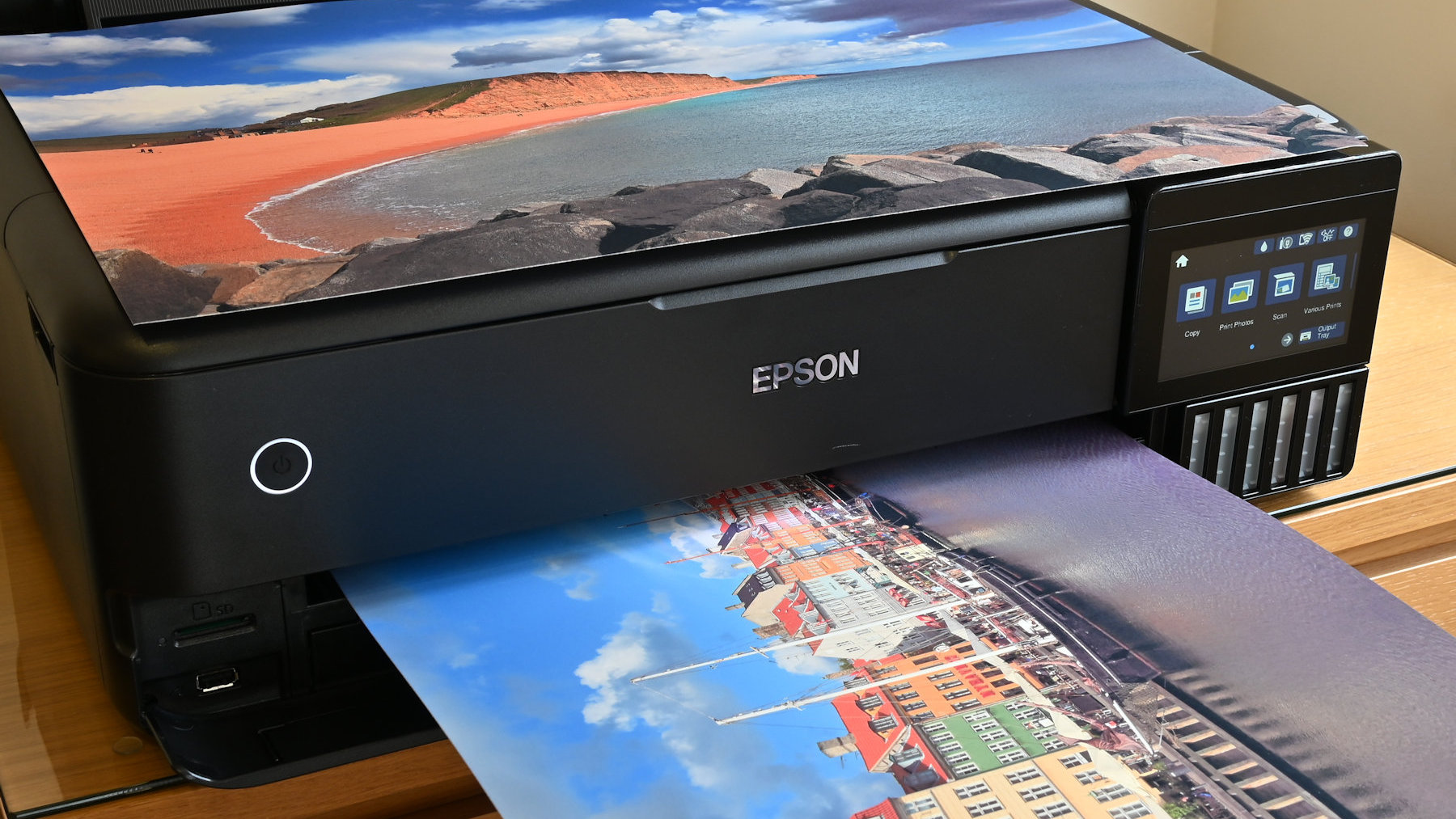
Specifications
Reasons to buy
Reasons to avoid
✅ You want a single large-format printer for photos and documents.
✅ You like multi-function versatility with a built-in scanner and touchscreen interface.
❌ You’d rather have a specialist photo printer for the very best quality on glossy paper.
❌ You print on matte or fine-art media, for which pigment inks are better.
If I only wanted to make 8.5-inch (A4) photo prints, Epson’s ET-8500 is cheaper to buy than this upscaled version. The initial outlay for the 13-inch (A3+) ET-8550 isn’t a great deal more (although it’s still expensive) and both printers are fed by the same set of 70ml ink bottles. These comprise a pigment-based black ink for delivering crisp mono text, and five dye-based inks for photo output, which include CMYK plus a grey ink to enhance the color space and provide better fidelity for black & white photo printing. A full set of bottles should be sufficient for printing 2,300 6x4-inch photos. Naturally, I find the relatively long-lasting EcoTank design really comes into its own for large-format printing. I think it’s great that I can make lots of big prints without constantly worrying about buying expensive new cartridges.
I find that the Epson is well suited to both document and photo printing. I like that it features multiple input cassettes for loading different types and sizes of paper, and supports auto duplex double-sided document printing. I’m also a fan of the built-in 8.5x14-inch scanner, and the intuitive 4.3-inch color touchscreen. For me, the printer works really well for standalone operation of remotely via a smartphone or tablet, using the ‘Epson Smart Panel’ app. Connectivity options include USB, Wi-Fi and Ethernet, and there’s also an SD card slot and USB port, so it really keeps all my options open.
I like that, for printing on larger-format paper up to A3+/13x17-inch, there’s an upright feeder which pulls up from the back of the printer, plus a horizontal feeder for printing banners and panoramic photos up to 2m in length, as well as allowing for specialist media up to 1.3mm thick.
Print speeds are fairly rapid in all but the highest-quality photo mode. Photo quality is pretty convincing but nowhere near a match for the more specialized Canon PIXMA PRO-200, which has a much greater range of inks (all of them dedicated to photo output). Even so, considering the lack of light cyan and light magenta inks, the Epson produces rich, bright and vibrant color rendition.
Read more: Epson EcoTank ET-8550 review
| Print quality | Print quality to great for both prints and doucments and makes a great all-round printer | ★★★★ |
| Cost to run | It is cheap to rum, but more expensive that its A4 version and uses the same 70ml ink tanks | ★★★½ |
| Overall value | For the initial investment its a good median across the range | ★★★★ |
Best 17-inch (A2) Canon photo printer
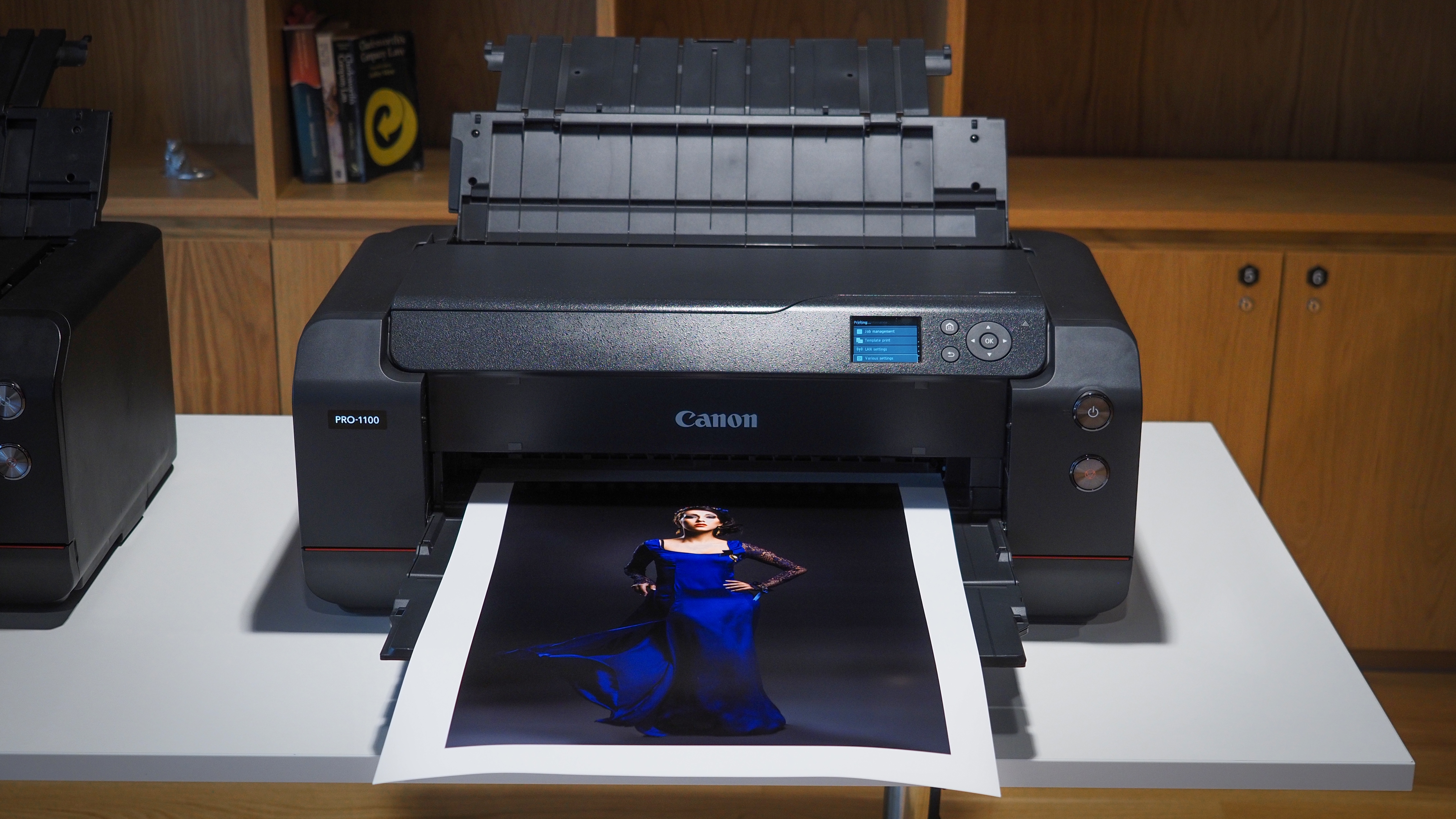
7. Canon ImagePrograf Pro-1100
Our expert review:
Specifications
Reasons to buy
Reasons to avoid
✅ You want to max out on quality as well as size.
✅ You want to create borderless prints on matte and fine-art media.
❌ You prefer printing on glossy photo paper.
❌ You’d rather have a more compact, lightweight printer.
The new flagship Pro-1100 replaces Canon's Pro-1000 and to be honest I was rather sceptical about whether it was possible to improve on this flagship printer's performance. However, I was wrong - ans was particularly impressed about the improvement to the depth of the blacks in the print tests that I performed.
Yes, this is a big bulky printer and an expensive investment, but the results speak for themselves. Print quality is simply unbeatable on matte and fine art stock, as it inherits all the muscle of the Pro-1000, and especially when printing monochrome images, thanks to picking up some tricks from the Pro-300 as well.
The Canon ImagePrograf Pro-1100 has upgraded to the latest Lucia Pro II inks. These 11 pigment-based inks now contain wax, giving them added scratch and abrasion resistance, and also boast lightfastness of up to 200 years. There's also the Chroma Optimizer tank, delivering better and more even results on glossy stock, and the new matte black ink has been adopted from the Pro-300, laying down unbelievably deep dark blacks that will make your old monos look grey!
There are seven new paper sizes and four more borderless printing sizes than the Pro-1000 offered, and the long-form print for roll paper has now been increased from 1.2m / 3.94ft to a maximum of 3.2767m / 10.75ft – music to the ears or banner and pano printers.
Pigment-based printers tend to be slower than their dye-based counterparts, but the Pro-1100 matches the speed of its predecessor, outputting full A2 prints in as little as around 3½ minutes. As always with pigment-based inks though, I find it’s best not to touch the prints for a while after they’ve exited the printer, to give the ink time to fully dry. A full set of cartridges is expensive to buy but they have an unusually high capacity of 80ml each, which is more ink than is often sold in bottles for EcoTank or MegaTank refillable printers.
Read our Canon ImagePrograf Pro-1100 review
| Print quality | Outstanding print quality on matte and fine-art paper | ★★★★½ |
| Cost to run | This is a pro-grade printer and comes at a high cost per print. However, its worth the cost when you see the results | ★★★★ |
| Overall value | A high cost to buy upfront and inks are not cheap, but this pro-grade printer is at the top of its class | ★★★★½ |
Best 17-inch (A2) Epson photo printer
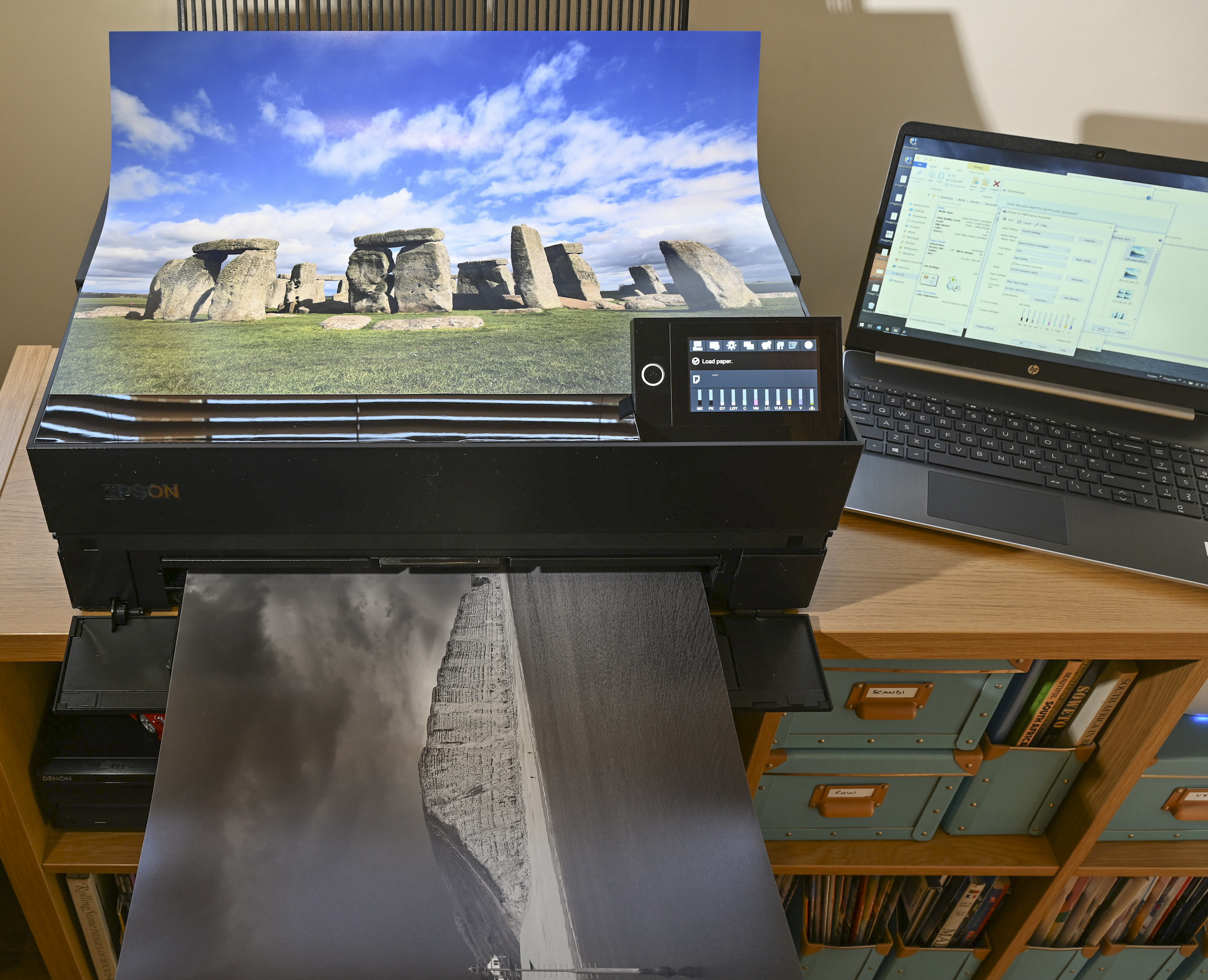
Specifications
Reasons to buy
Reasons to avoid
✅ You want to go large on your photo prints but keep compact dimensions for the actual printer.
✅ You specialize in matte and fine-art media printing, rather than using glossy photo paper.
❌ You ned egreat quality on glossy paper as well as matte and fine-art media.
❌ You’d rather have the higher-capacity ink cartridges featured in the Canon PRO-1000.
I’ve already given the lowdown on the Epson SureColor SC-P700 13-inch (A3) printer, which is a direct competitor to the Canon ImagePROGRAF PRO-300. The SC-P900 17-inch (A2) is naturally more expensive to buy but I like that it gives relatively supersized output from a printer that’s only about the same size and weight as the Canon 13-inch (A3+) model. I also like that its 50ml cartridges have twice the capacity of the SC-P700’s cartridges, resulting in significant savings for ink costs. Even so, that’s less ink than the Canon PRO-1000’s 80ml cartridges.
In previous large-format Epson printers, the photo black and matte black inks shared a common channel in the print head. I’d therefore need to purge and refill the ink in the channel every time I swapped between glossy and matte media, wasting time and money. The SC-P700 and SC-P900 put that to rights, with dedicated channels for all ten inks.
I like the handling characteristics of this printer. It has an additional pull-out feeder at the front, ideal for fine-art media and relatively thick poster board. It also allows for extra-long cut-sheet media, while a roll paper feeder is available as an optional extra (whereas it’s included with the smaller SC-P700). I find the 4.3-inch color touchscreen useful and intuitive, and I like that the printer features a translucent top panel and interior LED lighting, so I can keep a check on your prints as they’re being made.
There are up to five quality settings available, depending on media type, but the highest settings are typically very slow and give a virtually imperceptible increase in print quality for most images and papers. Print quality itself is excellent, for both color and mono output, although the Canon PRO-300 just has the edge for really deep blacks and, without a ‘chroma optimizer’ cartridge, the Epson’s output on glossy paper looks less smooth.
Read more: Epson SureColor SC-P900 review
| Print quality | Great on most most media except gloss | ★★★★½ |
| Cost to run | With 10 inks, this will be slight ore to run than those with 4 - but you get what you pay for | ★★★★ |
| Overall value | It's a good investment for those seeking a pro-grade solution, but want it keep it to a compact size on their desk | ★★★★½ |
How to choose the best photo printer
Dye or pigment inks?
Pigment-based inks have larger molecules and are more robust. For document printing on plain paper, they’re more smudge-resistant so are less likely to be ruined by a ring of moisture from a water bottle, or from the use of highlighter pens. Pigment-base inks are also better for premium photo printing on matte photo paper and fine-art media. The flipside is that dye-based inks are better for photo printing on glossy paper, as the smaller molecules enable the ink to be fully absorbed beneath the protective glossy top layer of the paper.
How many inks do I need?
Printers traditionally use CMYK (cyan, magenta, yellow, and black) inks for effective mono and color document printing. Some dual-purpose photo/document printers include both dye-based and pigment-based black inks, with dye-based black providing greater depth and contrast than the "composite black" created by mixing cyan, magenta, and yellow.
High-end photo printers often expand beyond CMYK, incorporating additional inks like light cyan and light magenta to extend the color gamut. Top-tier models go even further, adding extra gray cartridges to enhance tonal range and depth in black-and-white prints.
Do I need a scanner facility on my printer?
Just as you print documents and images from your computer, you may also need to digitize or copy existing pages. Most modern inkjet printers come equipped with a built-in scanner, adding to their overall versatility. Many also feature an Auto Document Feeder (ADF), which automates the scanning or copying of multi-page documents, eliminating the need for manual page feeding.
The best models take it a step further with ADF scanners capable of scanning both sides of a double-sided document in a single pass, effectively doubling efficiency and saving valuable time.
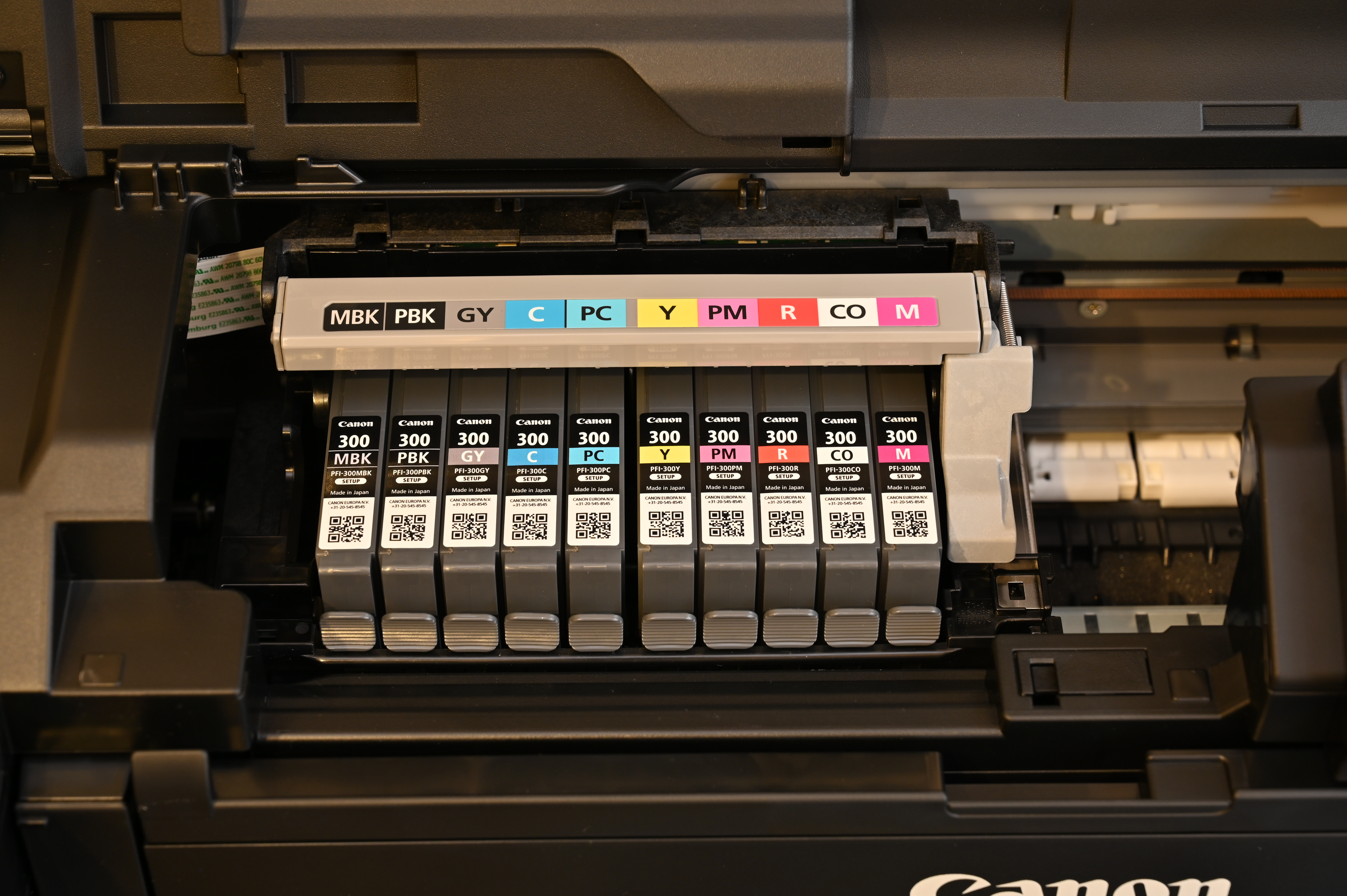
Cartridges or ink tanks?
Ink tanks outperform cartridges in terms of both cost-efficiency and convenience. Traditional cartridge-based inkjet printers usually come with "setup cartridges" that barely last, and replacing them with a full set of regular cartridges can often cost as much as, or even more than, the printer itself. It's clear where manufacturers profit. On top of that, cartridges often run out at the most inconvenient times, creating a real issue if you don't have backups available. Overall, cartridges can be frustrating and costly, especially for regular printing.
Are ink tank printers messy to refill?
You might be concerned that refilling ink tanks with bottles could be messy, but that's no longer the case. Modern ink bottles feature uniquely shaped tops, ensuring each one only fits in the correct tank. Additionally, the process is gravity-fed, so there's no need for squeezing. Ink is only released through an internal valve once the bottle is securely placed in the tank's top receptacle. The valve also automatically shuts off when the tank is full, eliminating any mess.
Do I need to use genuine cartridges?
Third-party ink cartridges are often a fraction of the cost of genuine ones, and the same applies to photo paper. However, very cheap cartridges carry the risk of containing impurities that could clog the tiny nozzles of the print head, leading to significant issues. For photo printing, this could also result in poor color accuracy and a drastic decrease in print longevity. To ensure high-quality prints, reliability, and long-lasting results, it's best to stick with genuine supplies or choose third-party alternatives that are reasonably priced and come with a solid reputation.
How we test photo printers
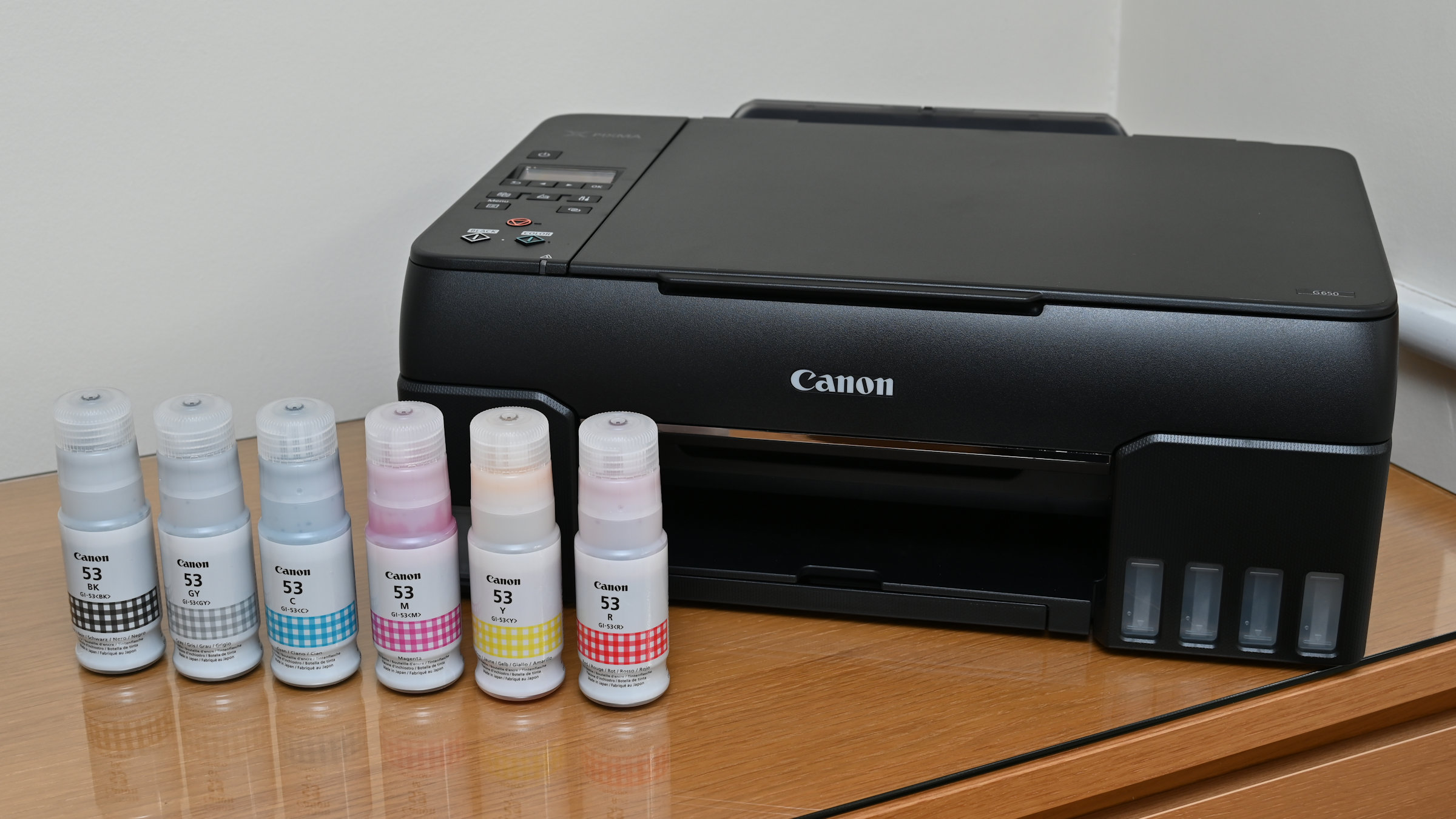
Our test procedure begins with installing the latest software drivers and running nozzle check and print head alignment routines. We then create test prints from mono documents, mixed text and graphics color documents, and a wide range of digital photos that include landscapes, portraits, and black & white images.
We use the various available quality modes, including optional image enhancement features. We also create prints from our own specially created test chart, to test the printer's accuracy in terms of color reproduction, tonal range, retention of detail in bright highlights and dark shadows, and the ability to deliver smooth gradations in subtle color variations. The printer manufacturer’s own-brand inks and papers are used throughout the entire testing procedure.
For output speed, we record the time taken to produce various sizes of prints at different quality settings. Ink costs are calculated on typical page yield against average prices for the manufacturer’s own-brand cartridges or bottles.
Find out more about how we test and review on Digital Camera World
Get the Digital Camera World Newsletter
The best camera deals, reviews, product advice, and unmissable photography news, direct to your inbox!
Matthew Richards is a photographer and journalist who has spent years using and reviewing all manner of photo gear. He is Digital Camera World's principal lens reviewer – and has tested more primes and zooms than most people have had hot dinners!
His expertise with equipment doesn’t end there, though. He is also an encyclopedia when it comes to all manner of cameras, camera holsters and bags, flashguns, tripods and heads, printers, papers and inks, and just about anything imaging-related.
In an earlier life he was a broadcast engineer at the BBC, as well as a former editor of PC Guide.
